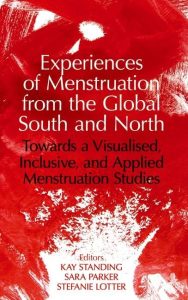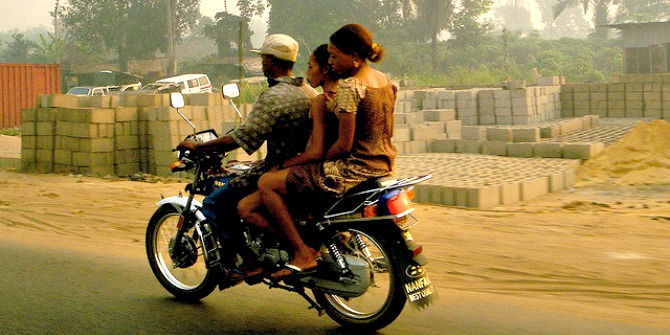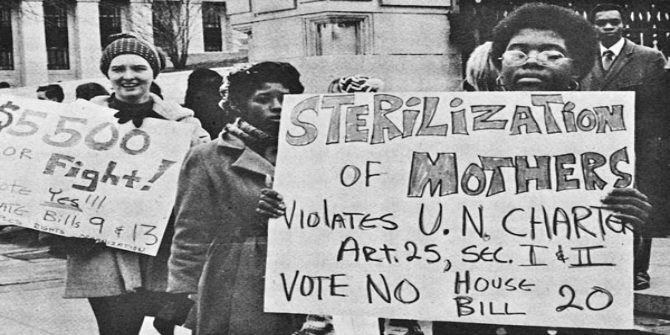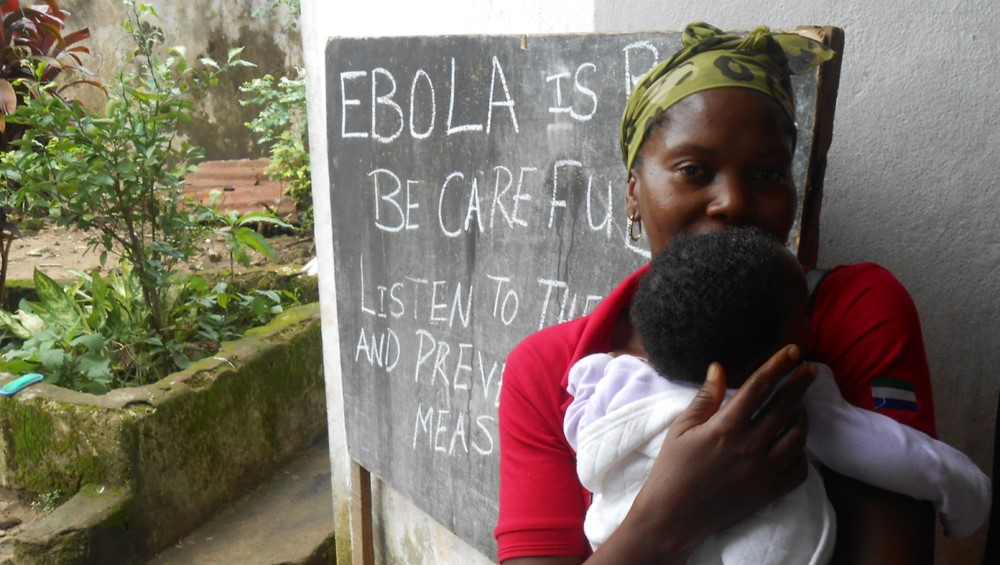In Experiences of Menstruation from the Global South and North, Kay Standing, Sara Parker and Stefanie Lotter compile multidisciplinary perspectives examining experiences of and education around menstruation in different parts of the world. Spanning academic research, activism and poetry, this thought-provoking volume advocates for inclusive approaches that encompass the diverse geographical, social, cultural, gender- and age-related subjectivities of menstruators worldwide, writes Udita Bose.
 As Bobel writes in the foreword to Experiences of Menstruation from the Global South and North, “Menstruation is simultaneously everywhere and nowhere” (xvii). The book attempts to create dialogues between the Global North and Global South, recognising that menstrual experiences are a global issue, but the stigma, shame, and secrecy surrounding menstruation, make it difficult to address the various problems associated with menstruation.
As Bobel writes in the foreword to Experiences of Menstruation from the Global South and North, “Menstruation is simultaneously everywhere and nowhere” (xvii). The book attempts to create dialogues between the Global North and Global South, recognising that menstrual experiences are a global issue, but the stigma, shame, and secrecy surrounding menstruation, make it difficult to address the various problems associated with menstruation.
The book criticises how discourse about menstruation in the Global South is characterised by the development approach produced by the Global North.
The book criticises how discourse about menstruation in the Global South is characterised by the development approach produced by the Global North. In the introduction, Lotter et al argue that development approaches adopted in the Global South focusing on “alleviating poverty and working towards gender equality and improvement of living conditions” (10) have reinforced stigma associated with menstruation. This occurs because such development approaches centre the supply and demand of menstrual products, which, according to Garikipati in Chapter Seven, promotes the concealment of menstruation through the use of menstrual products (105). Lotter et a argue that a decolonial approach will help to acknowledge that countries in the Global South have made “trailblazing developments” (11) in destigmatising menstruation and tackling period poverty: Kenya ended the taxation of menstrual products long before Canada, in 2004 (11). The editors thus call for the Global North to learn from the Global South and promote a collaborative global approach when discussing menstrual experiences.
The book identifies how a lack of scientific knowledge and information about menstruation exacerbates the stigmatising of sociocultural experiences associated with it
The collaborative approach is evident in how the chapters in the collection have been organised and linked. For instance, the book identifies how a lack of scientific knowledge and information about menstruation exacerbates the stigmatising of sociocultural experiences associated with it, in the Global North and the Global South. King (Chapter Three) discusses at length how “physiology textbooks” recommended for medical students in the UK do not explain that even though menstruation is a prerequisite for conception and pregnancy, they do not inevitably follow from menstruation (24). Such emphasis on the alleged “purpose” of the menstruating body obscures the reality of the experience for women and girls. The pain, discomfort and blood loss that regularly accompany menstruation is minimised, hindering girls’ and women’s ability to respond to and understand their own bodies. This resonates with Amini’s research in Iran (Chapter 12). Amini demonstrates how most girls in Iran respond to menarche thinking that they have either lost their virginity or have a bad illness (165). These chapters show how the experience of the biological process of menstruation is conditioned by the cultural meaning it gains in a context.
Research [in Nepal] found that intersecting factors like caste, religious ideologies and ethnicity determine whether a teacher can discuss menstruation in school.
Amini’s research connects to that of Parker et al (Chapter Four) which, based in Nepal, reiterates the importance of imparting knowledge about menstruation and placing it in its sociocultural context. Their research found that intersecting factors like caste, religious ideologies and ethnicity determine whether a teacher can discuss menstruation in school. In this chapter and in the research project Dignity Without Danger – a research project launched in 2021 by Subedi and Parker developing and gathering educational resources on menstruation in Nepal (2021) – research participants noted that they were left to study the topic of menstruation on their own (38). The contextualisation of menstrual knowledge also frames the work by Garikipati (Chapter Seven) who focuses her research on menstrual products in the Indian context (103). Along with criticising the profit-driven global market, she emphasises the need to focus on sustainable development. Garikipati advocates for solutions that are tailored appropriately to the individual context (105).
The discussions on contextualising knowledge production about menstruation by researchers in diverse sociocultural and physical contexts underline the need for inclusivity. Inclusion is discussed in relation to several dimensions of menstrual knowledge production. Various researchers have captured menstrual experiences in the everyday context of the workplace (Fry et al, Chapter Eight), the school (Parker et al, Chapter Four; King, Chapter Three), the community (Garikipati, chapter Seven; Quint, Chapter Five; Macleod, Chapter 13) and the home (Amini, Chapter 12). In every setting, it is the menstruating body whose agency takes centre stage. This is enabled through the diverse and creative research methods employed by the researchers to explore menstrual experiences. For instance, Macleod (Chapter 13) had menstruating girls shoot films to narrate their menstrual experiences and held informal sessions in the schools in Gombe and Buwenge in Uganda to watch the films (190). This resonates with Lessie’s (Chapter Two) multi-sectoral approach to addressing menstruation and menstrual health. As Letsie underscores, the right to information and the right to health are basic human rights. Menstrual health is therefore a human rights issue, and its inclusion in health and development policies and programmes should be prioritised.
The book encompasses menstruating bodies at different stages of life, be it menarche or menopause
The book encompasses menstruating bodies at different stages of life, be it menarche or menopause (Weiss et al, Chapter 10), and menstruating bodies that are disabled (Basnet et al, Chapter Nine). The concluding pages of the book discuss the future prospects of research on menstruation. In doing so, Standing et al highlight the need for more research on “menstruators at margins” (230), for example, menstruators in prisons and detention centres, in humanitarian settings, sex workers, and those with disabilities. Thomson’s (Chapter 11) poem calls for normalising menstruation irrespective of gender and menopause irrespective of age, describing voluntary menopause at a young age to convert from being a female to a male (“because when I was a little girl, I knew I wasn’t…I just thank God that me and my Mother’s menopause didn’t align” 156-157). The poem echoes Lotter et al’s observation in the introduction that “not all women have periods and not all people who menstruate are women” (7). More than seeing menstruation through a lens of gender, it needs to be seen as “an issue of equity and justice” (7).
In this way, the book thus comes full circle in attempting to locate the menstruating body at the epicentre of the school and integrate all other sectors of society (family, community, policy development) into the production of knowledge on menstruation. The amplification of the need for inclusivity is particularly valuable, recognising the differences between menstrual experiences in the Global North and the Global South and challenging the gender binary, as captured in Thomson’s poetry. It is a thought-provoking volume which exposes the reader to the geographical, social, cultural, gender- and age-related subjectivities in which menstruation is experienced, examined through a variety of epistemological approaches. The book thus sets the ball rolling for further advancement of knowledge production around menstrual experiences in all their diversity.
Note: This post gives the views of the author, and not the position of the LSE Review of Books blog, or of the London School of Economics and Political Science.
Image credit: PINGO’s Forum on Flickr.







